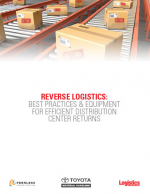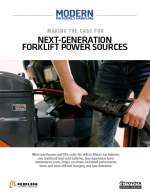Making the Case for Next-Generation Forklift Power Sources
When warehouses and DCs make the shift to lithium-ion batteries over traditional lead-acid batteries, they experience lower maintenance costs, longer run times, increased performance, faster and more efficient charging, and less downtime.
Charging Efficiency is the Next Step toward Competitive Advantage in DCs and Warehouses
With only so many hours in the day to work with, warehouse and fleet managers are always looking for ways to do more with less, cut costs, and gain a competitive advantage.
Right now, many of them are finding those answers—and more—in lithium-ion battery(LIB)-powered forklifts.
Lead-acid batteries are the current industry standard for electric forklifts and are regenerated with an 8-hour charge time, plus an additional 8-hour cooldown time before they can be cycled back into the forklift for use. The case for LIBs gains strength because of their far superior charging capabilities, which is much faster and occurs during a 1-hour or 2-hour continuous session.
Declining LIB costs and the fact that more companies are using them are also driving the trend to replace lead-acid batteries. In the end, the economics typically come down to just how much the batteries themselves are used, which impacts downtime, maintenance, and labor costs.
What’s Related




Favorites





